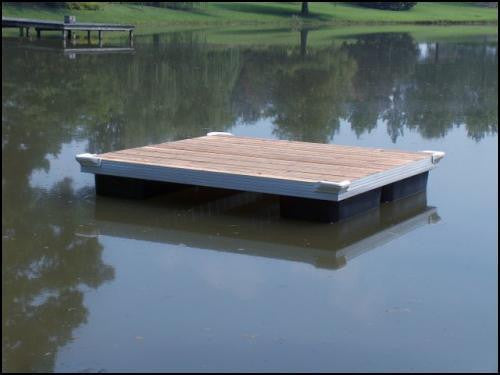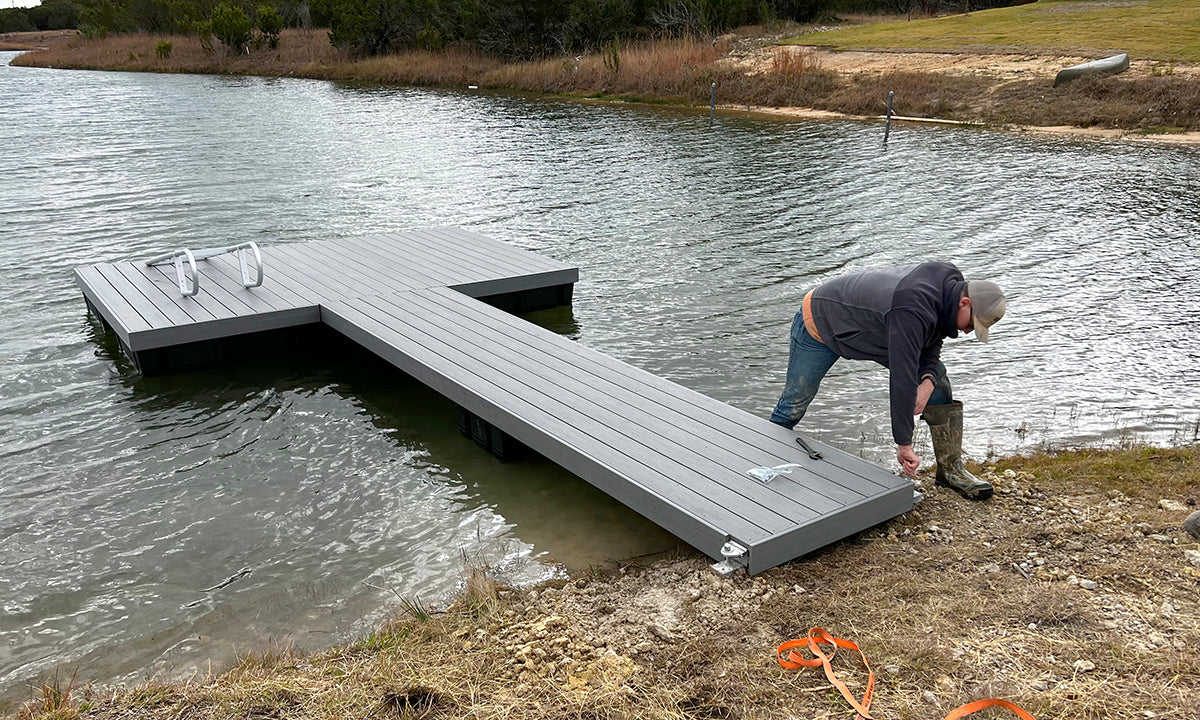The Ultimate Overview to Picking the Ideal Floating Docks
Choosing the suitable floating dock requires a detailed understanding of various elements that affect both efficiency and durability. Variables such as dock kinds, products, and important features substantially affect your decision-making procedure. In addition, factors to consider around setup and budget can better make complex the choice. By analyzing these aspects systematically, one can make sure a financial investment that not just satisfies prompt demands but likewise enhances total residential property value. As we discover these important components, it comes to be clear that the appropriate selections can lead to a practical and enduring option customized to your details needs.
Understanding Floating Dock Types
When selecting a drifting dock, it is vital to understand the numerous types readily available, as each serves distinct objectives and applications. Floating docks largely come under three classifications: modular, stationary, and pontoon docks.
Modular docks are composed of individual sections that can be quickly set up or reconfigured, making them perfect for altering water levels and diverse uses, such as industrial procedures or recreational tasks. Their versatility permits customization based upon details needs.

Pontoon docks are characterized by their buoyant structure, often composed of multiple pontoons that offer security and support. They are particularly fit for larger vessels and are generally utilized in marinas or for beachfront properties. Comprehending these types help in selecting the most suitable floating dock to satisfy specific demands, ensuring optimal functionality and security.
Trick Materials for Resilience
Selecting the best materials for floating docks substantially influences their toughness and longevity. One of the most typical materials consist of timber, plastic, steel, and composite materials, each offering distinctive advantages and limitations.
Timber, usually preferred for its visual appeal, needs normal upkeep to stand up to dampness and degeneration. Pressure-treated lumber can boost resistance to rot, yet it might still be vulnerable to bugs and weathering.

Plastic docks, made of high-density polyethylene (HDPE), are immune to corrosion, UV radiation, and effect, making them a preferred choice for coastal settings. Their light-weight nature likewise facilitates very easy installment and moving.
Steel docks, generally constructed from aluminum or galvanized steel, offer extraordinary stamina and sturdiness. They are resistant to rust, particularly when dealt with, yet might require added insulation to avoid warm build-up in hot climates.
Composite products, incorporating wood fibers and plastics, deliver the benefits of both timber and plastic, standing up to dampness and fading while calling for marginal upkeep. - floating docks
Eventually, the selection of materials need to straighten with ecological conditions, intended usage, and maintenance choices to guarantee the floating dock remains practical and visually pleasing gradually.
Necessary Functions to Think About
While the option of products is critical, taking into consideration important attributes for floating docks is similarly vital to guarantee optimal efficiency and user fulfillment. One crucial attribute to assess is the dock's find out here buoyancy ability, which determines just how much weight it can sustain without submerging. floating dock services. This is vital for accommodating boats, personal watercraft, and even recreational tasks
Additionally, transportability is a substantial factor to consider. Relying on your requirements, you may want a dock that is easy to deliver and disassemble, particularly if you intend to relocate it seasonally. Security is an additional necessary feature; a well-designed floating dock needs to reduce movement triggered by wind and water currents, supplying a safe and secure system for customers.
Safety functions, such as non-slip surfaces and rounded edges, are likewise essential to stop crashes, specifically in wet conditions. Additionally, take into consideration the schedule of devices, such as cleats, bumpers, and ladders, which can improve the performance of your dock.
Installation and Maintenance Tips
Establishing and keeping a drifting dock calls for mindful planning and interest to detail to guarantee its long life and optimal performance. Begin by choosing a proper place that decreases direct exposure to strong currents and waves, which can cause wear and tear. Ensure that the water depth is adequate for the dock's height and that it is secured securely to avoid movement.
During setup, comply with the supplier's standards very closely, as improper assembly can jeopardize security. Usage high-quality materials resistant to corrosion, such as aluminum or dealt with wood, to boost durability. Frequently check all elements, consisting of floats, ports, and securing systems, for indications of damage or wear.
If your dock utilizes flotation devices, ensure they continue to be intact and cost-free from slits. try here By adhering to these setup and upkeep ideas, you can delight in a reputable and practical floating dock for years to come.
Budgeting for Your Dock
Budgeting for your dock is a critical step that can substantially affect your total fulfillment and investment in a waterside home. Establishing a clear spending plan assists you navigate the different choices readily available and ensures you make informed decisions that line up with your monetary capabilities.
Begin by establishing the dimension and style of the dock you require, as these factors will considerably affect the cost. Floating docks can vary significantly in rate, relying on materials, buoyancy, and functions like ramps and devices. Study various manufacturers and providers to contrast costs and recognize the market value.
Along with preliminary prices, consider continuous expenditures such as upkeep, insurance policy, and possible fixings. Allot funds for these recurring prices to stay clear of surprises down the line. It's also sensible to budget plan for any type of needed licenses or evaluations, which might be called for by regional policies.
Lastly, bear in mind the possible roi. A tactical dock can improve your home's value and allure, supplying a positive economic influence in the long-term. By budgeting successfully, you can make sure that your dock satisfies your needs without compromising your economic stability.
Final Thought
In final thought, choosing the ideal floating dock demands a thorough examination of various aspects, consisting of dock kinds, products, important functions, and installment procedures. Prioritizing toughness and conformity with neighborhood regulations ultimately improves performance and building worth. Careful consideration of budgetary restrictions will even more make sure a sound investment. By adhering to these guidelines, individuals can make informed decisions that promote long-term complete satisfaction and usability in aquatic environments.

While the selection of products is essential, thinking about important functions for floating docks is similarly vital to make certain optimal efficiency and individual satisfaction.Establishing up and keeping a floating dock requires cautious preparation and interest to information to guarantee its long life and optimum performance. Floating docks can vary their explanation dramatically in price, depending on materials, buoyancy, and features like accessories and ramps.In final thought, choosing the perfect floating dock demands a comprehensive analysis of numerous elements, consisting of dock kinds, materials, crucial features, and setup processes.